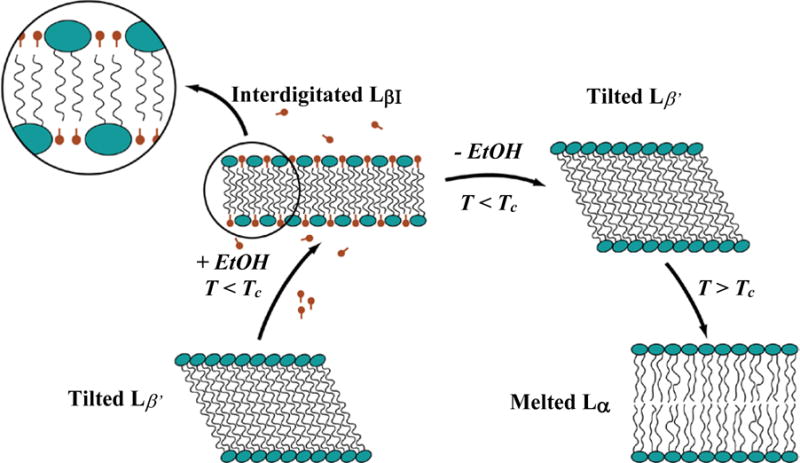Fig. 3.

Phase progression used to encapsulate CuS nanoparticles inside liposomes. At temperatures below the gel-liquid crystal transition Tc, the bilayer is in the L β′ phase with the molecules tilted to accommodate the area mismatch between heads and tails. Ethanol swells the headgroups leading to the interdigitated LβI phase. The bending modulus increases, leading to the formation of stacks of open bilayer sheets. Removing the ethanol causes the reversion to the L β′ phase, but the sheets remain open. Raising the temperature above Tc melts and softens the bilayers, and they close to form liposomes, passively encapsulating nanoparticles in the solution.
